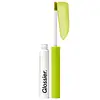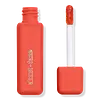What's inside
What's inside
 Key Ingredients
Key Ingredients

 Benefits
Benefits

 Concerns
Concerns

 Ingredients Side-by-side
Ingredients Side-by-side

Isododecane
EmollientTrimethylsiloxysilicate
EmollientSilica
AbrasiveSilica Dimethyl Silylate
EmollientOctyldodecanol
EmollientDimethicone
EmollientGlyceryl Behenate
EmollientHydrogenated Polycyclopentadiene
Hydrogenated Polydecene
EmollientDisteardimonium Hectorite
StabilisingHelianthus Annuus Seed Oil
EmollientTocopherol
AntioxidantPropylene Carbonate
SolventHydrogenated Styrene/Isoprene Copolymer
Caprylic/Capric Triglyceride
MaskingCI 77163
Cosmetic ColorantCI 77891
Cosmetic ColorantCI 77742
Cosmetic ColorantCI 19140
Cosmetic ColorantCI 42090
Cosmetic ColorantIsododecane, Trimethylsiloxysilicate, Silica, Silica Dimethyl Silylate, Octyldodecanol, Dimethicone, Glyceryl Behenate, Hydrogenated Polycyclopentadiene, Hydrogenated Polydecene, Disteardimonium Hectorite, Helianthus Annuus Seed Oil, Tocopherol, Propylene Carbonate, Hydrogenated Styrene/Isoprene Copolymer, Caprylic/Capric Triglyceride, CI 77163, CI 77891, CI 77742, CI 19140, CI 42090
Isododecane
EmollientMicrocrystalline Wax
Emulsion StabilisingIsodecyl Neopentanoate
EmollientMica
Cosmetic ColorantTrimethylsiloxysilicate
EmollientDisteardimonium Hectorite
StabilisingDipentaerythrityl Tetrahydroxystearate/Tetraisostearate
Skin ConditioningPolyethylene
AbrasiveHydrogenated Polycyclopentadiene
Boron Nitride
AbsorbentSilica
AbrasivePropylene Carbonate
SolventSilica Dimethyl Silylate
EmollientTocopherol
AntioxidantCI 42090
Cosmetic ColorantCI 77499
Cosmetic ColorantCI 77492
Cosmetic ColorantCI 77891
Cosmetic ColorantCI 77491
Cosmetic ColorantCI 77510
Cosmetic ColorantCI 19140
Cosmetic ColorantCI 16035
Cosmetic ColorantIsododecane, Microcrystalline Wax, Isodecyl Neopentanoate, Mica, Trimethylsiloxysilicate, Disteardimonium Hectorite, Dipentaerythrityl Tetrahydroxystearate/Tetraisostearate, Polyethylene, Hydrogenated Polycyclopentadiene, Boron Nitride, Silica, Propylene Carbonate, Silica Dimethyl Silylate, Tocopherol, CI 42090, CI 77499, CI 77492, CI 77891, CI 77491, CI 77510, CI 19140, CI 16035
Ingredients Explained
These ingredients are found in both products.
Ingredients higher up in an ingredient list are typically present in a larger amount.
CI 19140 is also known as Tartrazine. Tartrazine is a synthetic dye used in cosmetics, foods, and medicine to add a yellow color.
Tartrazine is created from petroleum and is water-soluble.
Some people may experience allergies from this dye, especially asthmatics and those with an aspirin intolerance.
Learn more about CI 19140Ci 42090 is a synthetic dye created from petroleum. It is used to give a bright blue color to cosmetics, medicine, and food.
Ci 77891 is a white pigment from Titanium dioxide. It is naturally found in minerals such as rutile and ilmenite.
It's main function is to add a white color to cosmetics. It can also be mixed with other colors to create different shades.
Ci 77891 is commonly found in sunscreens due to its ability to block UV rays.
Learn more about CI 77891Disteardimonium Hectorite comes from the clay mineral named hectorite. It is used to add thickness to a product.
It can also help stabilize a product by helping to disperse other ingredients.
Hectorite is a rare, white clay mineral.
Learn more about Disteardimonium HectoriteWe don't have a description for Hydrogenated Polycyclopentadiene yet.
Isododecane is a fragrance, emollient, and solvent.
As an emollient, it helps your skin stay soft and hydrated. Emollients help trap moisture into your skin.
Isododecane's role as a solvent makes it a great texture enhancer. It spreads smoothly on skin and does not leave a sticky feeling behind. Isododecane also helps prevent color transfer in makeup products.
Isododecane is not absorbed into skin.
Learn more about IsododecaneThis ingredient is a solvent. It helps dissolve active ingredients and alter the texture of products.
Propylene Carbonate is commonly used in makeup and with clay, such as montmorillonite or bentonite.
Studies show this ingredient to be safe for cosmetics. When it is undiluted, it can cause skin irritation. (It is always diluted in skincare and makeup). This ingredient is water-soluble.
Propylene Carbonate is created from propylene glycol and carbonic acid.
Learn more about Propylene CarbonateSilica, also known as silicon dioxide, is a naturally occurring mineral. It is used as a fine, spherical, and porous powder in cosmetics.
Though it has exfoliant properties, the function of silica varies depending on the product.
The unique structure of silica enhances the spreadability and adds smoothness, making it a great texture enhancer.
It is also used as an active carrier, emulsifier, and mattifier due to its ability to absorb excess oil.
In some products, tiny microneedles called spicules are made from silica or hydrolyzed sponge. When you rub them in, they lightly polish away dead skin layers and enhance the penetration of active ingredients.
Learn more about SilicaThis silica is mainly used to thicken oils and suspend particles in oils. It is not water soluble.
According to the manufacturer, it:
The manufacturer also claims this ingredient to be useful in makeup.
In lipstick formulations, this ingredient improves color payoff, reduces pigment settling, and reduces oil bleeding. This ingredient also improves the grip of powder products such as dry shampoos.
Learn more about Silica Dimethyl SilylateTocopherol (also known as Vitamin E) is a common antioxidant used to help protect the skin from free-radicals and strengthen the skin barrier. It's also fat soluble - this means our skin is great at absorbing it.
Vitamin E also helps keep your natural skin lipids healthy. Your lipid skin barrier naturally consists of lipids, ceramides, and fatty acids. Vitamin E offers extra protection for your skin’s lipid barrier, keeping your skin healthy and nourished.
Another benefit is a bit of UV protection. Vitamin E helps reduce the damage caused by UVB rays. (It should not replace your sunscreen). Combining it with Vitamin C can decrease sunburned cells and hyperpigmentation after UV exposure.
You might have noticed Vitamin E + C often paired together. This is because it is great at stabilizing Vitamin C. Using the two together helps increase the effectiveness of both ingredients.
There are often claims that Vitamin E can reduce/prevent scarring, but these claims haven't been confirmed by scientific research.
Learn more about TocopherolThis silicone is an emollient. Emollients create a thin film on the skin to prevent moisture from escaping.
It is not soluble in water and helps increase water-resistance in products.
According to a manufacturer, it can blend seamlessly with silicone oils, such as Cyclopentasiloxane.
Learn more about Trimethylsiloxysilicate